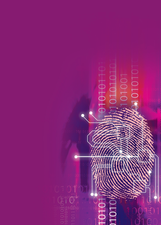Examining the art of computer forensics
To Catch a Thief

You don't need expensive proprietary tools to practice the craft of computer forensics.
Crime scene: the server room…The thief doesn't need a key card or the protection of darkness – an intruder can use the Internet to come and go. But despite the secret entrance, the attacker still leaves behind some telltale traces. Finding and interpreting this evidence is the top priority of criminal investigators.
This month's cover story explores the world of computer forensics. We'll show you some tools the experts use to find clues, recover deleted files, and root out hidden evidence. We start with a study of the open source Sleuth Kit forensics toolkit. We also look at Foremost and Scalpel – a pair of tools for finding and restoring deleted files. We show you how to examine Windows disks with Linux tools, and we end with a look at the Open Computer Forensics Architecture, a freely available collection of forensics tools and libraries developed for the Dutch police.
But if you're not really going to trial and you just want to catch the intruder on your system, you might not want to go to all the trouble of launching a full forensics investigation. The following sections describe some tips for finding intruders on the system using standard Linux utilities.
[...]
Buy this article as PDF
(incl. VAT)
Buy Linux Magazine
Subscribe to our Linux Newsletters
Find Linux and Open Source Jobs
Subscribe to our ADMIN Newsletters
Support Our Work
Linux Magazine content is made possible with support from readers like you. Please consider contributing when you’ve found an article to be beneficial.

News
-
Parrot OS Switches to KDE Plasma Desktop
Yet another distro is making the move to the KDE Plasma desktop.
-
TUXEDO Announces Gemini 17
TUXEDO Computers has released the fourth generation of its Gemini laptop with plenty of updates.
-
Two New Distros Adopt Enlightenment
MX Moksha and AV Linux 25 join ranks with Bodhi Linux and embrace the Enlightenment desktop.
-
Solus Linux 4.8 Removes Python 2
Solus Linux 4.8 has been released with the latest Linux kernel, updated desktops, and a key removal.
-
Zorin OS 18 Hits over a Million Downloads
If you doubt Linux isn't gaining popularity, you only have to look at Zorin OS's download numbers.
-
TUXEDO Computers Scraps Snapdragon X1E-Based Laptop
Due to issues with a Snapdragon CPU, TUXEDO Computers has cancelled its plans to release a laptop based on this elite hardware.
-
Debian Unleashes Debian Libre Live
Debian Libre Live keeps your machine free of proprietary software.
-
Valve Announces Pending Release of Steam Machine
Shout it to the heavens: Steam Machine, powered by Linux, is set to arrive in 2026.
-
Happy Birthday, ADMIN Magazine!
ADMIN is celebrating its 15th anniversary with issue #90.
-
Another Linux Malware Discovered
Russian hackers use Hyper-V to hide malware within Linux virtual machines.

